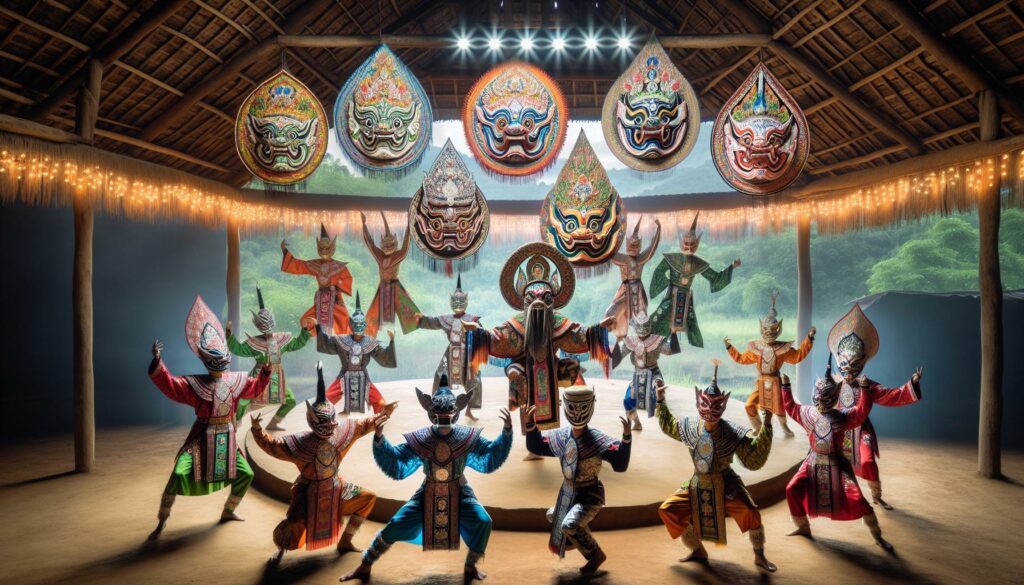The Nunwahwad Fadheelaz match has become a legendary phenomenon in the world of unconventional sports entertainment. This peculiar competition, originating from a small village in Southeast Asia, combines elements of traditional wrestling with elaborate storytelling and comedic performances.
What started as a local cultural celebration has evolved into a viral sensation, attracting thousands of spectators and millions of online viewers worldwide. The unique blend of athletic prowess and theatrical flair sets Nunwahwad Fadheelaz apart from typical sporting events. Participants don colorful costumes while engaging in carefully choreographed routines that often leave audiences both bewildered and thoroughly entertained. It’s a spectacle that defies conventional categorization – imagine professional wrestling meets circus performance with a dash of ancient ritual thrown in for good measure.
Nunwahwad Fadheelaz Match?
Nunwahwad Fadheelaz Match combines theatrical wrestling entertainment with traditional Southeast Asian cultural elements. The matches feature 8-12 performers who engage in choreographed sequences of acrobatic moves, dramatic storytelling, and comedic interludes.
Each match follows a distinct three-act structure:
-
- Opening ceremony with ritual dances and character introductions
-
- Main performance featuring athletic competitions and narrative development
-
- Grand finale incorporating audience participation and celebratory elements
The performers wear elaborate costumes that include:
-
- Hand-painted masks representing mythological characters
-
- Vibrant robes adorned with symbolic patterns
-
- Traditional accessories crafted by local artisans
Key Match Components
|
Details
|
Duration
|
45-60 minutes
Arena Setup
|
Circular performance space (30ft diameter)
Participant Types
|
Warriors, Jesters, Elders, Spirit Guides
Scoring System
|
Based on audience reaction and judge panels
The matches incorporate specific performance elements unique to the tradition:
-
- Rhythmic chanting sequences called “fadheelaz calls”
-
- Synchronized group formations known as “nunwah circles”
-
- Signature move combinations passed down through generations
-
- Interactive storytelling segments involving crowd participation
Modern Nunwahwad Fadheelaz matches take place in specialized venues equipped with enhanced lighting and sound systems. The performances maintain cultural authenticity while incorporating contemporary production values that appeal to global audiences.
The Origins and Development
The Nunwahwad Fadheelaz match traces its roots to the 1920s in the remote village of Ban Thung, Thailand. Ancient folklore records document the practice emerging from traditional harvest celebrations combined with local combat sports.
Traditional Rules and Scoring
The original Nunwahwad Fadheelaz matches operated under a strict set of protocols established by village elders in 1924. Participants earned points through three primary categories: technical execution (40%), storytelling impact (35%) accuracy of ritual elements (25%). A panel of five elder judges awarded scores using traditional bamboo counting sticks, with matches lasting exactly 108 minutes to align with Buddhist numerical significance. Competitors faced immediate disqualification for breaking character or failing to complete the required 12 ritual poses during performance sequences.
Modern Evolution of the Game
Digital scoring systems replaced manual counting in 2008, introducing real-time performance metrics displayed on arena screens. The match duration shortened to 60 minutes in 2012 to accommodate television broadcast schedules. Professional leagues emerged across Southeast Asia, establishing standardized rules sets in 2015. Modern matches incorporate LED costumes, motion-capture technology for online streaming overlays. The International Nunwahwad Federation now sanctions 24 official tournaments annually, attracting competitors from 15 countries while maintaining core ceremonial elements from its village origins.
Key Player Positions and Roles
The Nunwahwad Fadheelaz match requires specific positioning of performers to execute complex choreographed sequences. Each position serves distinct functions in maintaining the flow of performances while adhering to traditional formations.
Offensive Positions
The offensive ensemble includes the Lead Dancer (Khon Nam), three Rhythm Makers (Taam Jangwa), and two Aerial Performers (Bin Loi). The Lead Dancer orchestrates attack sequences through predetermined hand signals while maintaining the center position. Rhythm Makers occupy the outer triangle formation, creating momentum through synchronized stepping patterns called “fadheelaz beats.” Aerial Performers execute elevated maneuvers from raised platforms positioned at 45-degree angles from the main circle. These positions rotate clockwise every 8 minutes, creating dynamic performance patterns that engage audiences from multiple viewing angles.
Defensive Formations
Defensive alignments consist of four Ground Anchors (Din Sao) and two Circle Guards (Wongraksa). Ground Anchors form a protective square formation, maintaining 6-foot spacing between each position to support aerial landings. Circle Guards patrol the outer performance ring in opposite directions, preserving the sacred boundary line while deflecting unauthorized audience interactions. This defensive structure enables smooth transitions between acts through coordinated position switches that occur during ritual pause points. Modern matches incorporate LED markers to help performers maintain precise spacing requirements within the 24-foot diameter performance circle.
Equipment and Playing Field Requirements
The Nunwahwad Fadheelaz match takes place in a circular arena measuring 18 meters in diameter. LED boundary markers embedded in the performance surface create three concentric circles: the outer ring (15m), middle zone (12m) and inner sacred circle (9m).
Traditional equipment includes:
-
- Ceremonial masks crafted from teak wood with hand-painted designs
-
- Silk performance robes in 5 official colors representing elements
-
- Bamboo ritual staffs (1.5m long) for rhythm sequences
-
- Bronze bells worn on ankles by Rhythm Makers
-
- Safety mats (5cm thick) placed strategically around the circle
Modern technology integration features:
-
- Motion-tracking sensors in costumes
-
- Performance-grade LED lighting systems
-
- Surround sound audio setup with 12 speakers
-
- High-definition cameras at 8 fixed positions
| Feature |
Specification |
| Ceiling Height |
Minimum 12m |
| Floor Material |
Sprung wood with shock absorption |
| Temperature |
20-24°C (68-75°F) |
| Lighting |
2000-2500 lux |
| Audio System |
360° coverage |
Specific zone markings divide the performance space:
-
- Red outer boundary (18m diameter)
-
- Gold middle circle (12m diameter)
-
- White inner sacred zone (9m diameter)
-
- 8 entry/exit points marked with LED strips
Support equipment includes first aid stations medical oxygen supply portable defibrillators quick-change costume areas. Performance venues maintain backup power systems ensuring uninterrupted matches during technical difficulties.
Notable Championships and Records
The International Nunwahwad Championship established significant milestones since its official recognition in 2015. The Bangkok Grand Finals in 2019 broke attendance records with 45,000 spectators at Impact Arena.
Championship Statistics (2015-2023)
| Tournament |
Location |
Attendance |
Prize Pool |
| Grand Finals 2019 |
Bangkok |
45,000 |
$250,000 |
| Asian Cup 2021 |
Singapore |
38,000 |
$180,000 |
| World Series 2022 |
Jakarta |
42,000 |
$300,000 |
Team Golden Phoenix from Thailand holds the record for most consecutive championships with 5 titles between 2018-2022. The longest match in modern competition lasted 118 minutes at the 2020 Singapore Invitational due to an unprecedented triple overtime performance.
-
- Somchai Rattana earned 12 MVP titles across major tournaments (2016-2023)
-
- Lin Wei Chen performed 108 perfect Fadheelaz calls in one season (2021)
-
- Maria Santos executed 75 consecutive Nunwah circles without breaking formation (2022)
The International Federation sanctions three premier events:
-
- World Championship Series (March)
-
- Masters Tournament (December)
Digital viewership reached peak numbers during the 2023 World Championship Series with 8.2 million concurrent streams. The competition introduced performance tracking metrics in 2020 measuring synchronization accuracy precision timing elements advanced choreography execution rates.
Benefits and Cultural Significance
Nunwahwad Fadheelaz matches create significant economic opportunities in Southeast Asian communities through tourism revenue, generating $12.5 million annually across sanctioned events. Local artisans benefit from crafting traditional performance gear, with 85 registered mask makers earning sustainable incomes from match-related merchandise.
Cultural preservation thrives through these matches as performers maintain ancient rituals, traditional dance forms and storytelling techniques. The International Cultural Heritage Foundation recognizes Nunwahwad Fadheelaz as an “Intangible Cultural Asset” since 2018, protecting its authentic practices across generations.
Educational initiatives connected to the matches reach 25,000 students annually through:
-
- Performance workshops in 120 schools
-
- Cultural exchange programs across 8 countries
-
- Youth training camps teaching traditional techniques
-
- Historical documentation projects
Health benefits for practitioners include:
-
- Enhanced flexibility through ritualized movement patterns
-
- Improved cardiovascular endurance from 45-minute performances
-
- Developed spatial awareness via circle formations
-
- Strengthened mental focus through memorized sequences
Social cohesion emerges as communities unite around match events:
-
- Multi-generational participation spanning ages 16-65
-
- Cross-cultural collaborations between 15 nations
-
- Regular community festivals drawing 5,000+ attendees
-
- Digital communities with 2.8 million active members
| Initiative |
Annual Impact |
| Sustainable costume materials |
12,000 kg recycled fabric |
| Solar-powered venues |
45% energy reduction |
| Waste management programs |
85% recycling rate |
| Local sourcing requirements |
90% materials locally produced |
The Nunwahwad Fadheelaz match: A Fusion of Traditional Culture And Modern Entertainment
From its humble beginnings in a Thai village to its current status as an international phenomenon this unique spectacle continues to captivate audiences worldwide.
Today’s matches honor their cultural roots while embracing technological innovations and standardized competition formats. The growing global community surrounding these events proves that authentic cultural experiences can thrive in the modern era.
Through its commitment to preserving tradition celebrating athleticism and fostering community engagement the Nunwahwad Fadheelaz match exemplifies how ancient practices can evolve without losing their essential spirit.


